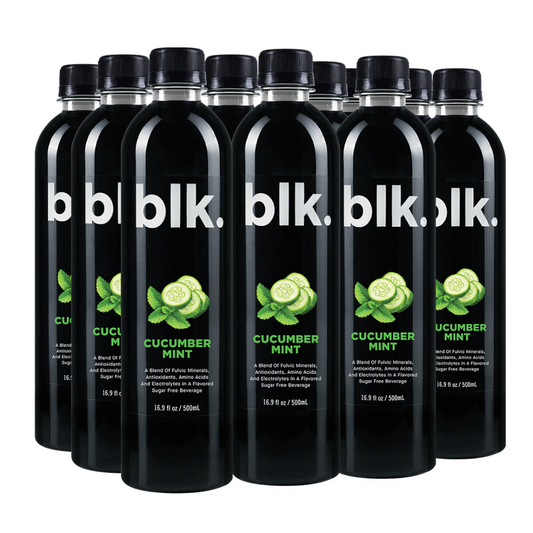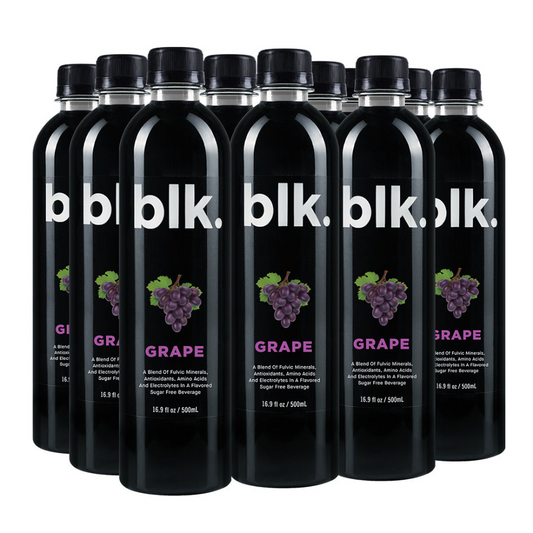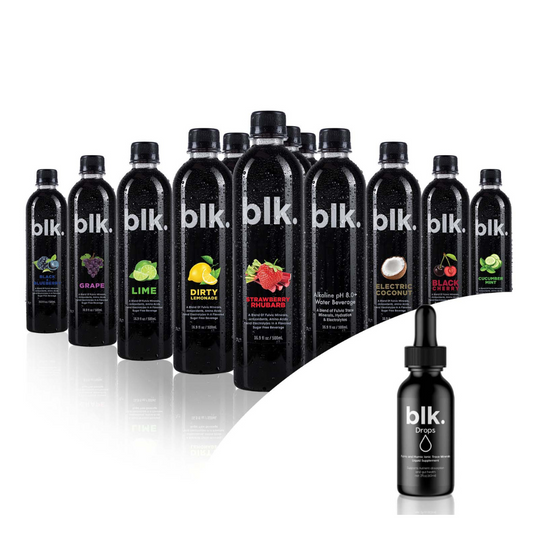
The Big Bicep Building Exercises
This Article Aims to Answer the Following:
- What biceps are
- The best biceps-building exercises
- Anatomy of biceps
- Biceps building tips
- Common mistakes to avoid while building biceps
Do you want your shirts to fit snugly? Start thinking of building biceps. Big biceps can help boost aesthetics and appearance, improve upper body strength, and enhance functional strength. Athletes, bodybuilders, movie stars, and models regularly train for hypertrophy, increasing muscle size, including the biceps. Ripped.com, the leading online store for health supplements, here shares a guide on big bicep-building exercises. But before we look at some exercises that can help you increase your bicep size, let's discuss what biceps are and some of the advantages of working them out.
What are Biceps?
The biceps are the muscles on the frontal part of the upper arm. They have short and long heads working as single muscles. They are attached to the arm bones using tendons, which are strong connective tissues. The proximal bicep tendon (the upper two tendons of the biceps) connects the biceps muscle to the shoulder joint, while the distal biceps tendon (the tendon at the elbow) attaches the biceps muscles to the forearm bones. When the biceps contract during exercises, the forearm moves up and rotates outwards The eccentric training penetrates the biceps contraction, helping them gain strength and size.
Top Biceps Building Exercises to Grow Biceps Size
Barbell Curl
The bicep curl is an easy-to-do exercise. Start by standing tall with your shoulder blades down the back, chest up, and shoulder pulled back before squeezing back and curling the barbell up and slightly out. Next, find the contraction and pause, then control the bar on the way down.
Variations of the barbell curl include eccentric, drag, and seated barbell curl. See here for guidance.
Preacher Curl
Here is how to do the preacher curl:
- Sit on the preacher curl bench with your feet flat on the floor while hand grabbing the EZ curl bar or barbell from underneath. Make sure that your upper arm and chest touch the arm pad.
- With your arms in contact with the pad, squeeze your biceps and bend your elbows to curl the barbell.
- Lift until the bar is at the same level as your shoulders
- Squeeze your shoulders to finish the movement
- Lower the barbell to the starting point by slowly straightening your elbows
Cable Curl
Here is how to do cable curl:
- Stand in the right form, i.e., plant your feet firmly on the floor with your knees slightly bent, your back straightened, and your head steady. Remember also to look forward
- Curl the cable weight upward. Aim for your chest, then breathe out. Remember to move only forearms, which should rise from the elbow
- Pause at the top of the contraction
- Slowly lower your firearms to the starting position and inhale
- Keep the cable under tension by stopping just before the weights stack
You can also try to vary your cable curls as much as possible, provided that you adopt the right posture and form.
Dumbbell Curl
Here is how you perform a dumbbell curl:
- Get a pair of dumbbells and assume the right form and positioning, i.e., your feet should be shoulder-width apart and knees slightly bent. Remember to also stand tall, keep your head and neck position neutral, and tuck your chin throughout the movement.
- Bring the dumbbells to your sides once you evenly distribute your weight or stability. Your arms should be slightly bent at the elbows and palms facing forward.
- Squeeze the biceps and start bending your elbows until the lower arms come in contact with the upper ones, then pause at the top. Remember to keep the upper arm still.
- Return to the starting position by slowly straightening the elbows, then begin a new repetition.
Chin-Up
Here is how to perform chin-ups for the best results:
- Position yourself by the pull-up bar then grab it with your palms facing inwards. Your arms should also be shoulder-width apart.
- While engaging the core and upper back, lift your chest towards the bar till your chin is over it.
- Return to the starting position, then repeat for as many reps as you need.
Hammer Curl
Here is how to perform Hammer Curl for the best results:
- Hold a dumbbell in both hands while standing straight. Ensure they are positioned by your sides, and your feet are hip-width apart.
- Engage your core for stability, bend at your elbows, and lift the dumbbells to shoulder level. Your biceps should be stationary.
- Pause at the contraction, then lower the dumbbells back to the starting position.
- Repeat
Incline Curl
Here is how to perform Incline Curl for the best results:
- Position the weights at your sides (both hands) while sitting against a workout bench. Remember to tighten your abdominal muscles and keep your back straight.
- With your palms facing upwards, lift the dumbbells towards the shoulders. Your arms should be tight to guarantee the movement of only the lower arms.
- Return the dumbbells back to the starting position slowly.
- Repeat as many times as you need.
Drag Curl
Here is how to perform Drag Curl for the best results:
- Grip a barbell with your palms facing upwards. Your hands should be shoulder-width apart.
- While looking straight ahead, slowly lift/drag the barbell towards the shoulders. Remember to keep your shoulders down, chest up and elbows back for the perfect contraction.
- Stop the movement at the lowest chest, pause for a while then return the bar to the starting position.
- Repeat
Concentration Curl
Here is how to perform Concentration Curl for the best results:
- Position yourself by sitting on a bench and placing a dumbbell between your legs. Ensure that your knees are bent at a right angle.
- Use the left hand to grab the dumbbell, and rest its upper back on your inner thigh. Remember to extend your arm to hold the weight comfortably.
- Curl the weight up in controlled motion while only moving the forearms.
- Pause at the top of the movement and squeeze the biceps.
- Slowly return to the starting position by lowering the weight.
- Switch to the right hand once you have completed all the left arm’s reps.
Reverse Grip Barbell Row
Here is how to perform Barbell Row for the best results:
- Hold a barbell with the palms facing inwards while standing erect.
- Bend at the waist to bring your upper body forward. Your knee should also be slightly bent and back almost parallel to the floor.
- With the arms perpendicular to the floor and the chest, breathe out and lift the barbell. Remember to keep your torso stationary and the shoulders as close to the body as possible.
- Tightly squeeze your back muscles at the top and pause
- Return to the starting position by slowly lowering the weight
- Repeat for the recommended number of reps.
How to Measure the Biceps
Here is a step-to-step guide to help you measure the size of your biceps:
- Rest your elbow on a flat surface, preferably on top of a table
- Double the fist and curl the arms towards the shoulder
- Flex your bicep as hard as you can and hold it in that position for some time
- Take a seamless measuring tape and hold one end on top of the highest point of your bicep
- Wrap the tape straight around your upper arm and record the measurement where it overlaps the end of the highest point to get the circumference of the upper arm
- Open your hand and relax the flex, then measure the expansion of the biceps
- Flex the biceps again. Place one end of the measuring tape at the base of your bicep on the inner part of your arm. Measure over the muscle's highest point to the base of the outside muscle to get your bicep's actual size.
You can repeat the procedure to confirm your accuracy.
Why Building Big Biceps is Trend
Here are some reasons you need big biceps:
Aesthetics and Appearance
It's no secret that big biceps look good. It will give your clothes a snug fit, leaving you feeling more confident and psyched up for the day. It's also one way to show people you regularly work out.
Improved Upper Body Strength
Big biceps strengthen your upper body, allowing you to easily perform everyday tasks such as lifting and carrying. People with bigger biceps also find it easy to do exercises such as bench and overhead presses due to a stronger upper body.
Improved Functional Movement
The bicep is a functional muscle that helps lift, carry, hold, and reach. Bigger biceps make the aforementioned easy to do.
Improved athletic performance
Bigger and stronger arms help row and perform certain exercises.
Understand the Anatomy of Biceps for Better Results
Muscles that Make Up the Biceps
The biceps comprise three muscles, i.e., brachialis, brachioradialis, and coracobrachialis. The brachialis helps with flexion at the elbow, while the coracobrachialis allows arm flexion at the shoulder. The brachioradialis, found in the lateral forearm, flexes the forearm at the elbow.
How Biceps Work with Other Arm Muscles
The biceps work together with the following muscles:
Triceps
Whereas biceps allow the extension of the shoulders and flexion at the elbows, triceps work opposite to the biceps, allowing the flexion of the shoulders and extension of the elbow.
Forearm muscles
The biceps brachii allows the forearm to bend towards the upper arm for lifting and pulling purposes. It also turns the palm forward or upward in a process known as supination.
Shoulder Muscles
The long head of the biceps generally pulls the arm away from the abduction, turning it inwards, while the short head pulls it back towards the trunk.
Expert Tips for Biceps Building
Train Biceps Frequently
It's recommended to train the biceps three non-consecutive days a week. Do not exceed since overtraining can cause the muscle fibers that make up the biceps to tear, leading to poor performance or even injuries.
Incorporate Progressive Overload
Progressive overload requires a gradual increase in the intensity and difficulty of your workout. You can implement it by increasing resistance, endurance, tempo, or reps during training. Resistance training prevents you from plateauing, helping you build muscles and bigger biceps.
Ensure Proper Nutrition
Protein has many amino acids that help repair and maintain muscle tissues for optimal growth.
It's advisable to take the following nutrients along with proteinwhen growing muscles: Glutamine, calcium, carbohydrates, potassium, vitamin D, and magnesium.
How to Calculate Caloric Intake for Biceps Growth
There are online calorie calculators that you can use to calculate your caloric intake. Dieting is important in gaining muscles, so tracking calories and specific macronutrient composition helps you know if you are hitting the right targets needed to build your biceps.
Common Nutritional Mistakes to Avoid
- Do not skimp on breakfast,
- Do not reduce your protein intake,
- Graze on simple carbs, eat unbalanced meals, forego healthy fats,
- inconsistent meals, or eating too much before bedtime.
Rest and Recovery
Your muscles heal and grow during rest, giving you enough energy for your next workout. One of the common ways of resting is by sleeping. Sleep stimulates the secretion of the growth hormone for muscle growth and repair. Other active recovery techniques for the biceps and muscles include swimming, yoga or Tai chi, walking, jogging, and cycling.
General Mistakes to Avoid while Doing Biceps Building Exercises
Here are a few mistakes people make while building biceps that you should avoid:
- Ignoring the brachialis, the muscle responsible for flexing the elbows. ‘
- Lifting heavier than the recommended weight. In this case, the recommended weight refers to what your body can handle.
- Failing to spice up your biceps-building routine by including different exercises.
- Failing to work on your grip strength. Improved grip strength helps you lift heavy and improves the overall quality of your life. It is also connected to improved longevity.
Conclusion
Common exercises that can help you build muscles include barbell curl, dumbbell hammer curl, preacher curl, chin-up, and cable curl. Ensure that you try a good number of them for optimal results.
Frequently Asked Questions
-
How Long Should I Rest Between Bicep Sets for Maximum Growth?
-
Can I Build Big Biceps With Bodyweight Exercises?
-
What is the Best Bicep Exercise for Beginners?
-
What Other Muscles are Involved in Biceps Exercises?
-
How Can I Correct Biceps Imbalances?
-
Which are the Best Mass Building Bicep Exercises?
-
How Do I Get Bigger Biceps Fast?
-
Which Are the Best Short-Head Bicep Exercises?
-
Which are the Long-Head Bicep Exercises?
-
Which Bicep Exercises Work For Both Long and Short-Head Biceps?




